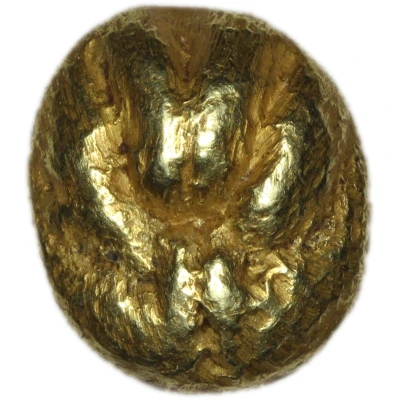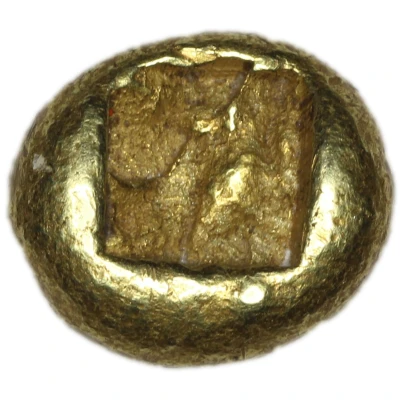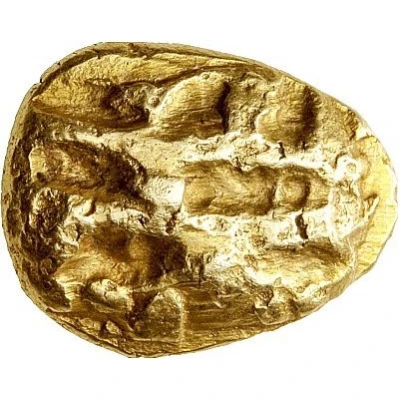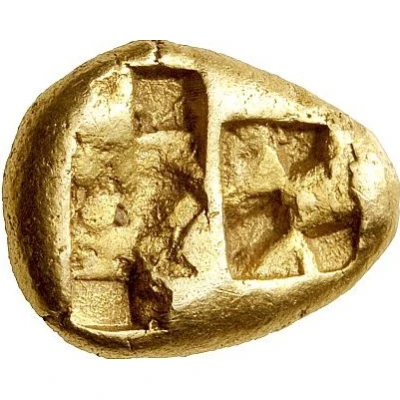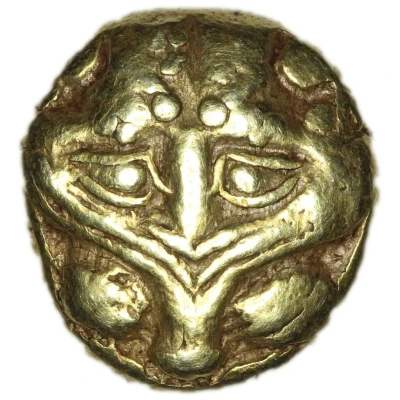
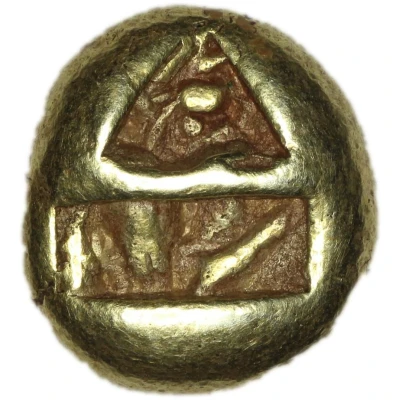

© Trustees of the British Museum
Hemistater 600 BC - 550 BC
| Electrum | 8.64 g | 15 mm |
| Issuer | Samos (Ionia) |
|---|---|
| Type | Standard circulation coin |
| Years | 600 BC - 550 BC |
| Value | ½ Stater (10) |
| Currency | Drachm |
| Composition | Electrum |
| Weight | 8.64 g |
| Diameter | 15 mm |
| Shape | Round (irregular) |
| Technique | Hammered, Incuse |
| Demonetized | Yes |
| Updated | 2024-10-10 |
| Numista | N#385410 |
|---|---|
| Rarity index | 100% |
Reverse
One rectangular and one triangular punch.
Interesting fact
The Hemistater coin was used as a form of currency in ancient Greece, specifically in the city-state of Samos (Ionia) during the 6th century BC. It was made of Electrum, a naturally occurring alloy of gold and silver, which gave it a unique value and made it a sought-after currency in the region. The coin's design featured an image of a lion's head on one side and an inscription on the other, which helped to authenticate its value and origin. Despite being over 2,500 years old, some of these coins have survived to this day and are highly prized by collectors and historians for their historical significance and artistic beauty.
